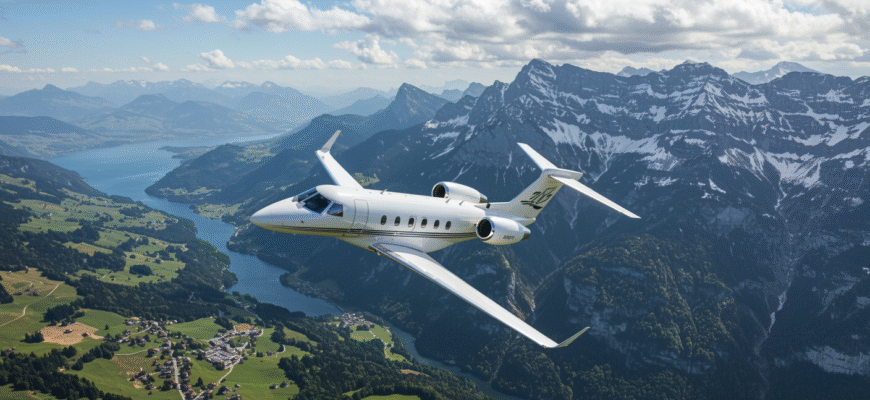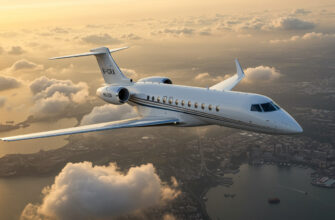Switzerland doesn’t just attract private jets—it practically magnetizes them. Tucked in the center of Europe’s richest regions, it’s the ultimate jump-off point for banking deals, snowy escapes, and art-world shakeups. Got big business in Milan on Monday and a heli-drop into St. Moritz by Friday? Switzerland makes it absurdly doable. Add in a local population that regularly ranks among the wealthiest in the world, and suddenly, owning or renting a jet here isn’t elite—it’s expected. And with major events like Davos or Art Basel lighting up calendars every year, the country’s flight paths fill up fast.
Recently though, full-on jet ownership is taking a backseat. Travelers who once proudly posed with tail numbers are shifting toward on-demand charters. Why? Flexibility. Efficiency. Less hassle, more spontaneity. Jump on an app, tap a destination, and a jet’s wheels-up in hours. Fractional ownership models are fading. What’s rising are digital bookings tailored to hyper-specific needs. In today’s world, renting a jet is less about status—and more about control on your own terms.
Peak Seasons And Travel Patterns
Switzerland’s private jet scene isn’t steady—it’s explosive in waves. Winters bring white-hot demand as ski towns like St. Moritz, Verbier, and Zermatt turn into luxury playgrounds. Between December and March, runways near the Alps see traffic surge with Gulfstreams and Falcons packed to their plush ceilings with fur-lined ski gear.
Then comes summer, and jetloads touch down for lakeside bliss and mountain air. From June to September, charter volumes soar again, targeting private chalets in Lugano or spas tucked away in villages with more goats than guests.
Add major events into the calendar mix and it’s not just snow or sunshine drawing private flyers.
- World Economic Forum (WEF): Every January, Davos becomes a runway hotspot with over 300 private jet arrivals via Zurich alone. That week? Flight counts more than double.
- Art Basel and the Geneva Auto Show: More than just glossy photos—these events bring in buyers, designers, and billionaires all with their own tail numbers.
The private jet calendar here doesn’t follow tourist seasons—it rewrites them.
Zurich And Geneva: Switzerland’s Jet Hubs
Two cities—Zurich and Geneva—act as Switzerland’s velvet-rope entries into elite air travel. But they serve very different vibes.
Zurich Airport (LSZH) is where business deals breathe. The terminals move fast with sleek lounges, minimal wait times, and tailored concierge services. It’s engineered for efficiency. Geneva Airport (LSGG), on the other hand, feels like a soft-focus lens. It handles a blend of leisure and diplomacy—think royal entourages, low-key celebrities, and upscale tourists flying into snow-capped weekends or lakeside conferences.
Want to talk high-profile landings? Here’s the rundown in HTML table format:
| City | Who Lands There | Why They Choose It |
|---|---|---|
| Davos (via Zurich or Samedan) | Politicians, Tech Founders, CEOs | Access to WEF, tightest security, seamless media avoidance |
| Geneva | Royal families, Art buyers, Private equity | Close to retreats, discreet diplomacy, global events |
These two hubs don’t just move planes—they move private power. One jet at a time.
Top Routes and Jet Models
Flying private in and out of Switzerland? You’re not alone. With roughly 56,000 private jet movements recorded yearly, the country is a top pick for quick getaways and global deals. Certain routes dominate the skies, especially between economic and lifestyle hot spots. From Zurich, frequent charters head out to London, Paris, Milan, and Dubai. These aren’t just leisure destinations—they’re boardroom-to-beach escapes for execs and entrepreneurs.
Geneva follows close behind with chart-topping routes to Nice, New York, Monaco, and Munich. Whether it’s a weekend at the Côte d’Azur or a red-eye across the Atlantic, jets buzz daily out of Geneva’s tarmac.
Jet preferences? It depends on distance and occasion. For Alps-to-Med hops or short Euro flights, light jets like the Citation CJ2 and Phenom 300 lead the pack—ideal for pairs or small groups chasing the sunset in comfort. On the high-end side, long-range craft like the Gulfstream G650, Falcon 7X, and Bombardier Global 6000 rule the skies. These flying lounges don’t just cater to luxury desires—they’re engineered for 10+ hour flights with no layovers.
Whether it’s gliding between ski slopes and seaside villas or closing cross-continental deals overnight, Switzerland’s skies stay loaded with names, numbers, and a whole lot of net worth.
Empty Legs and Booking Hacks
Ever flown private for half the cost—or less? That’s the magic of empty-leg flights. When jets drop passengers and return empty, they create hidden gems for last-minute flyers. Discounts often reach 50–75% off standard charter fees, but there’s a catch: you fly on their clock, not yours.
Finding these deals used to mean knowing someone. Now, apps and booking platforms are changing the game. Think JetSmarter, PrivateFly, XO, or LunaJets—they post flash sales and open legs in real time.
- Pro tip: Filter by departure within 72 hours for the cheapest fares
- Heads-up: Empty-leg flights usually have stricter cancellation rules
- Some perks: Champagne still flows, and VIP handling’s the same
Just watch for hidden charges like repositioning fees or fuel surcharges. Not every flight is as simple—or affordable—as it seems.
The Environmental Question
Switzerland’s not shy about its love for nature or its disdain for overconsumption. That means private aviation faces serious side-eye—and sometimes full-blown protests. WEF in Davos? Protesters flood ski towns every January, while rows of idling jets line Zurich and St. Gallen’s runways.
Data backs the outrage. A single flight in or out of Switzerland spits out roughly 4.46 tonnes of CO₂—more than most people emit all year. During Davos alone, over half the flights are short-haul—destinations close enough to reach by train, car, or even helicopter.
Pushback’s forcing some change. Sustainable aviation fuel (SAF) is in the mix, but it’s limited—think PR-friendly more than planet-saving. A few charter brokers now bundle carbon offsets into bookings, offering clients a shot at eco-redemption—but not everyone clicks “add.”
Operators are also tweaking their fleets—replacing gas guzzlers with more efficient jets, rerouting flight paths to lower overall burn, and exploring hybrid tech. Still, real progress is jet-lagged.
Whether this wave becomes a full-on shift or just a branding exercise is still up in the air. But for now, flying green in Switzerland often means more talk than takeoff.









